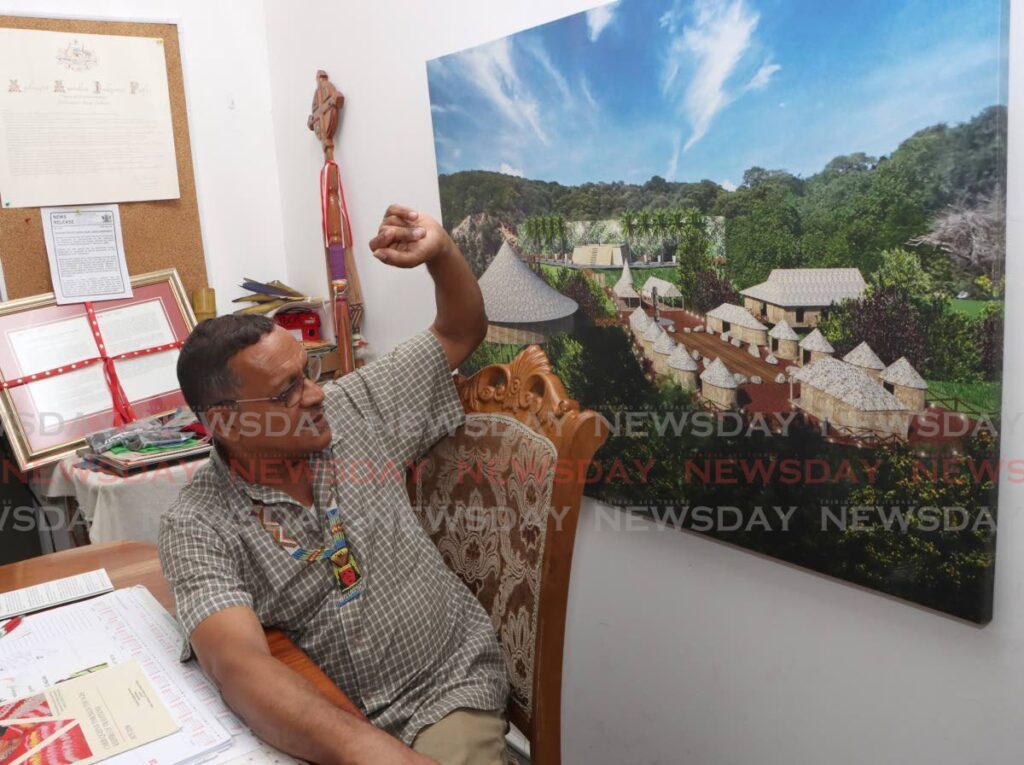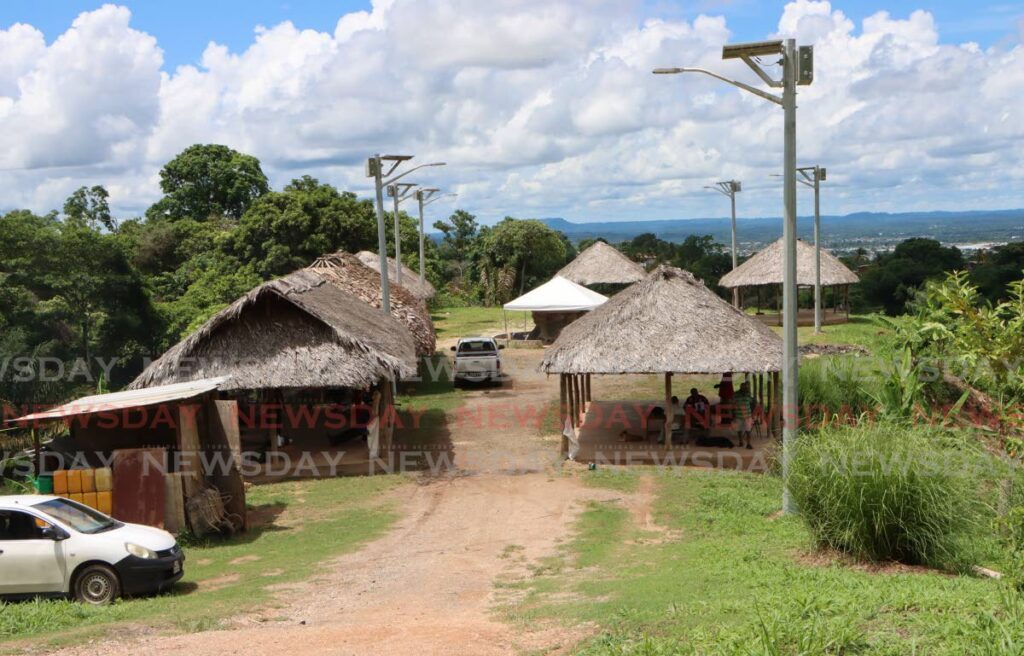First Peoples’ fight for visibility

CHIEF of the Santa Rosa First Peoples Community Ricardo Bharath says it is time for the First Peoples to be given a national holiday. He believes that the one-off national holiday declared by the Prime Minister on October 13, 2016, was a significant first step.
“Indigenous peoples have a unique and inherent right to their land, as opposed to any other settler group that came. This doesn’t mean we are better than anybody else, but we have a special right and protection.”
In 2018, when the First Peoples celebrated International Day of the World’s Indigenous Peoples, they were given 25 acres of land to establish the First Peoples Heritage and Living Museum on the Blanchisseuse Road in Arima. This was facilitated by then-Arima MP Anthony Garcia and agriculture minister Clarence Rambharat.
Since then, there has been ongoing work, described as slow due to “bureaucratic processes,” said Bharath. Works include their own WASA booster station, seen at the entrance of the site when Newsday visited on July 17, along with unfinished drainage work and roads.
Bharath said the one-off national holiday encouraged the nation to focus on First Peoples’ culture and customs but since then they “are back to square one.”
He called for October 14, the group’s Heritage Day to be made a permanent national holiday.
“First Peoples’ history, culture and traditions have contributed to Trinidad and Tobago as much as other ethnic groups.”
Bharath said more history and traditions of the First Peoples are being taught in schools and he thanked the Ministry of Education for its implementation, but he called for more representation of First Peoples on boards, in parliament and in other organisations that can effect change through legislation and other means.
“Students from all over, locally and regionally, visit our offices regularly seeking more information for their studies.”
Speaking at the First Peoples Community Centre, Paul Mitchell Street, Arima, he said the infrastructure work at the site is done through government tender
but the traditional structures are built by First Peoples.

“We have been planting trees and different food crops. We have built some huts. There is road work still ongoing, but the roads have greatly improved. We have electricity on-site, and the development is ongoing.”
He hopes the site will be completed in five years but also expressed doubt, saying:
“We hoped it would have already been completed. We continue to work on this site little by little with the resources available. There are important buildings still needed, like the cassava factory and washrooms. When funds become available, we will start these projects.”
Bharath said they are given a “small allocation” every year in the budget but says it is never enough to cover the cost of projects and educational programmes needed to promote their Culture.
“Our line ministry, Community Development, doesn’t come directly to us. We just state what we want to do and they implement it. We have partnered with a few private organisations, such as Habitat for Humanity and others, who have helped us along the way.”
Bharath believes they should be in charge of their own finances.
“United Nations Declaration states that indigenous people want to manage their own affairs and should be allowed to do so. Of course, that comes with challenges. the government manage those funds, we say what we need and they assist. The bureaucracy of the government system really stymies and frustrates the process.”
Since acquiring the land, he said he has seen a stronger sense of community, but he would like the youths in the community to get more involved and have a deeper pride in their culture.
“In the early days, everyone came out to do whatever needed to be done for the upliftment of the community. Today, it’s different. Nobody does anything without wanting something.”
Bharath believes that when the heritage site is complete, it will be a rallying point for the indigenous community and the indigenous youth will know they have a place and a space in society.
He echoed his earlier calls for a First Peoples public holiday, saying it will allow indigenous people to showcase their culture and the day will attract and educate more people.
“It’s our history, culture and heritage. It’s about being recognised like any other ethnic groups.”
He said representation is essential to motivating young indigenous people to put in a lot of effort and strive to be in positions that will benefit the First Peoples.
“Other groups are represented in positions of power, their voices are heard. Indigenous peoples don’t have that, we need our voice at the table, whether at the local or national level.
“The UN talks about minorities and why special treatment and protection should be given to minorities.”

However, Bharath remains hopeful that the First Peoples Heritage and Living Museum will be completed within the next five years, despite having doubts.
“Realistically, within five to seven years, we should be very advanced. Since the time we started. It has been about five years and we haven’t reached very far.”
He says he is committed to creating a space where they can feel seen and sees the construction of the heritage site as a way for all people to experience and share their customs, saying the heritage site’s can also help the tourism sector.
“There is a tourism element to the site, people will come to learn about our heritage and culture. Such places like this are supported by tourists, which helps sustain them.”
Bharath said he will continue to advocate for meaningful recognition, saying,
“Recognition and meaningful recognition are two different things. You can recognise people with token gestures, but we want things that will empower us sustainably.”
He spoke about reparations. On October 3, last year, Minister of Foreign and Caricom Affairs Dr Amery Browne announced the appointment by Cabinet of a national reparations committee whose chairs will sit on the Caricom Regional Commission on Reparations.
“Reparations are about correcting the wrongs of the past and addressing issues. Local governments need to show they are addressing these concerns to advocate for reparations from coloniser countries,” he said.

Comments
"First Peoples’ fight for visibility"